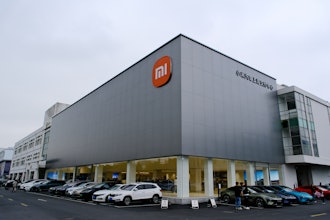Manufacturing.net sat down with Doug Fuehne, VP, Professional Services of PROS Pricing Software Solutions to talk about how manufacturers can improve their pricing strategies and come out ahead as the economy turns around.
To get right to it, the five pricing strategies Fuehne suggests will help you come out ahead in the economic recovery:
1.) Identify underperformers.
2.) Proactively forecast future performance.
3.) Increase organizational agility.
4.) Focus on customer satisfaction to keep the customers you DO have.
5.) Provide sales force with optimized prices and other highly relevant information in a timely manner.
1.) Identify underperformers
In good times companies may focus less on indentifying areas that are underperforming because rising tides in profits tend to cover their losses. However, it becomes even more important in a down economy to identify underperformers so you can understand why certain customers or certain product lines might be costing your company money.
“By identifying underperformers, a manufacturer can use this data to give the sales force clear directions on how to talk to these customers and discuss whether you're better off without them as customers because they are costing you profits, or how to keep them as a customer but correct pricing so you can maintain profit value,” Fuehne points out.
One of the challenges with indentifying underperformers is that you don't necessarily want to lump together poor performers in one group just because they're poor. So when doing segmentation analysis, Fuehne suggests looking at various reasons for different performance margins.
For example, if a customer has a distribution system in the Northeast, then customers in the south might look as if they’re underperforming as they incur higher transportation costs.
2.) Proactively forecast future performance.
The challenge here is to have a predictive, analytic tool to identify what is going to happen in the future and to set your pricing/performance strategy to better react to those predictions.
“Many manufacturers use a bottom-up forecast where they talk with individual sales staff and ask what they think they can sell next year. It's not only a time-consuming process to gather all the information, but also fraught with uncertainty because -- while a sales person has a good idea of what they can sell -- it is really an opinion and not based on science,” says Fuehne.
Fuehne suggests using a predictive analytical tool as a forecast method that evaluates past performance in specific market conditions and suggests what you’ll be able to sell in this particular product line in your region.
“What this allows customers to do is set prices and track and set goals to monitor how those prices perform against those strategies,” Fuehne notes.
3.) Increase organization agility
Especially in a down economy, it is vital to have a systematic process with the goal being to increase your ability to quickly communicate and make accurate pricing decisions based on current economic conditions.
“The goal is for the manufacturer to find a way to set a price, get the price back to the field, quote deals with those prices, monitor the outcome and then go back and reset prices as necessary. Having enterprise tools enables manufacturers to automate that process and really get it going,” says Fuehne.
With an automated pricing system, Fuehne says manufacturers can reset prices multiple times per day based on information that they gain in the marketplace. It allows sales people in the field to quote customers right from information and updates sent in real-time to their smart phones.
4.) Focus on customer satisfaction
Fuehne suggests using a pricing software system with a product analysis can help boost customer satisfaction and improve customer’s efficiency.
“As an example, a customer might order a product, then come back the next day and order additional products that they forgot about that should have been in the original deal. When using a complementary product analysis software during negotiations, you can remind customers of product orders they may also need,” explains Fuehne.
The analysis can make the process more efficient, because instead of having two orders, they'll only have one, thus increasing the speed of order processing.
A pricing analysis can also identify substitute product lines that might better fit a customer’s needs or price point. An analysis allows the sales force to look broadly instead of from a transaction-by-transaction basis.
By looking broadly, Fuehne says this can help identify customers that purchase multiple products across different product segments. Once this trend is recognized, the sales team has the advantage of creating a package deal that allows you to have a one-stop shop for customers that increases their purchasing efficiency.
5.) Provide optimized sales pricing for the sales reps
An optimum price strategy can help identify segments and show how customers perform inside of those segments. From there, you can then set prices for customers and communicate those to your sales team. The more information your sales team has available, the better it will help when negotiating long-term contracts.
“The goal is to have a sales rep not have to go back-n-forth over particular prices, but to have the pricing information right at their fingertips and also provide additional information such as inventory, cash flow, and price caps, limits or discounts,” explains Fuehne.
With an optimized sales pricing strategy, you’ll also help sales people that tend to discount much more than they should. With objective evidence from a pricing analysis, it makes it much easier for a sales person to make a decision on whether a discount is necessary.
“If you have that information, you can cut the discount down or not give it at all. And that tends to allow you to maintain a competitive price out there while still maintaining your profitability,” says Fuehne.
Doug Fuehne is vice president of Professional Services at PROS, a provider of profitability management and optimization software that enables companies to unlock the value hidden in their data to improve financial performance. For more information, visit www.prospricing.com


















